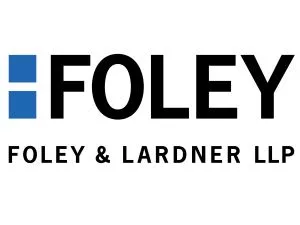- within Employment and HR topic(s)
- in Europe
- within Coronavirus (COVID-19), Government, Public Sector and Strategy topic(s)
With its August 8, 2025, opinion in Bivens v. Zep, Inc., the U.S. Court of Appeals for the Sixth Circuit rejected the EEOC's guidelines (and split with several other circuits) to hold that the standard for holding an employer directly liable for the acts of a non-employee is the higher standard of intent, not negligence.
Question Before the Sixth Circuit: Under Title VII, an employer can either be directly liability for its own actions or vicariously liable for the actions of its agents. The question before the Sixth Circuit in Bivens v. Zep, Inc. was: when, if ever, is an employer liable for acts of a non-employee?
EEOC Guidance:
The EEOC advises that an employer can be liable for non-employee acts of sexual harassment in the workplace when the employer, its agents, or its supervisory employees knew or should have known of the harassment and fails to take immediate and appropriate corrective action. 29 C.F.R. § 1604.11(e). The First, Second, Eighth, Ninth, Tenth, and Eleventh Circuits have adopted this EEOC Guidance and applied the negligence standard.
Sixth Circuit Rejects Negligence Standard, Requires Intent by Employer for Acts of Non-Employees.
In Bivens v. Zep, Inc., the Sixth Circuit rejected the EEOC's guidance and the approach of other circuits. Instead, the court reasoned that negligence cannot form the basis of employer liability for acts of a non-employee. Analyzing agency principles, the Sixth Circuit found that negligence is extended as a basis of liability for intentional torts (Title VII claims are intentional torts) because the employer has control over the activities of the employee. In Zep, Inc., however, the alleged harasser was not the company's employee or agent but instead was a client of the company. The Sixth Circuit found that fact to be dispositive, concluding that the court therefore could not rely on agency law to impute the client's wrongful intent to Zep.
Because the court found that vicarious liability was not an avenue for relief, it analyzed whether Zep could be directly liable for its own actions, i.e., whether the company intended for the harassment by the client to occur. Using the Supreme Court's definition of intent, the Sixth Circuit asked whether Zep desired to cause the harassment by the client or whether Zep was substantially certain that harassment would result from the client's actions. The Sixth Circuit concluded that Zep was entirely absent from the alleged harassment and, therefore, no jury could conclude that Zep intentionally treated Bivens worse because of her sex.
Sixth Circuit "Do[esn't] Lose Any Sleep Over" Rejecting EEOC Guidance and Departing from Other Circuits.
In reaching its conclusion, the Sixth Circuit emphasized that EEOC's authority has limited reach — that is, the EEOC is only authorized to issue procedural regulations, not substantive ones. Thus, the Sixth Circuit made clear that EEOC interpretive guidelines have no controlling effect on courts. And, even if EEOC guidance was binding, the courts would still be obligated to independently interpret Title VII. The Sixth Circuit expressly stated its respect for the EEOC's interpretation extends, at most, only as far as it finds the agency's interpretations persuasive.
Confident in its interpretation of Title VII, the Sixth Circuit went a step further to criticize its sister circuits for failing to independently interpret the statute and their failure to apply agency law in the context of employer vicarious liability. The Sixth Circuit suggests that the EEOC and circuits who have adopted EEOC guidance improperly apply the negligence standard for imputing a supervisor's or employee's intent on the employer to the actions of private individuals without considering the lack of agency between the employer and non-employee. The court reasoned that non-employees are not agents of the employer as non-employees have not agreed to act on the employer's behalf nor to be subject to the employer's control. Indeed, the Sixth Circuit asserts "there is no legal mechanism for imputing unlawful intent of a customer to a business he frequents."
Practical Implications for Employers
The Sixth Circuit's intent standard strengthens employers' legal defenses in Title VII claims based on the acts of non-employees, including independent contractors and clients. More broadly, this holding paves the way — and provides significant authority — for employers to argue that EEOC guidelines are not persuasivef and to seek more favorable judicial interpretations in cases involving laws under the purview of the EEOC.
The content of this article is intended to provide a general guide to the subject matter. Specialist advice should be sought about your specific circumstances.



